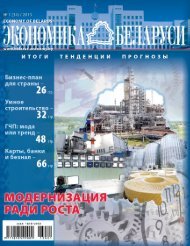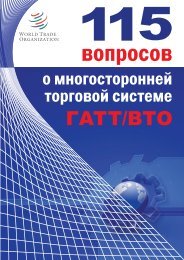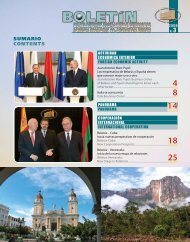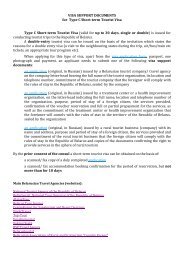Human Development Report 2013 - UNDP
Human Development Report 2013 - UNDP
Human Development Report 2013 - UNDP
You also want an ePaper? Increase the reach of your titles
YUMPU automatically turns print PDFs into web optimized ePapers that Google loves.
BOX 2.5Decent work in a competitive worldThe availability of decent, well paying jobs is economically empowering,especially for women. Yet today’s competitive global environment pressuresworkers to do more in less time for a lower wage. From both a human developmentand a business perspective, competitiveness is best achieved byraising labour productivity. Competitiveness squeezed out through lowerwages and longer working hours is not sustainable. Labour flexibility shouldnot mean adhering to practices that compromise decent working conditions.At least 150 countries have signed on to core International LabourOrganization conventions on such matters as freedom of association anddiscrimination in the workplace. Labour laws on minimum wage, employmentprotection, working hours, social security and forms of contracts allaim to reduce inequality, insecurity and social conflict; they also provideincentives for businesses to pursue high-road management strategies. Theview that more regulation is always bad for business has been discredited.One of the World Bank Group’s core Doing Business indicators on employingworkers, which ranked countries on the leniency of measures related tohiring and firing workers, was discontinued because it falsely implied thatfewer regulations were always preferable.International retailers and sourcing agents have a responsibilityto ensure that working conditions in the firms they source inputs fromcomply with international standards. Consider the recent case of one ofthe world’s most valuable companies, Apple, and its contractor, Foxconn.After a series of media exposés that documented terrible labour conditionsin Foxconn factories, Apple asked a monitoring group, the Fair LaborAssociation, to investigate. When the association published its findingsof low pay, long hours and hazardous working conditions, Foxconn agreedto substantial reforms, eventually reducing the average workweek to49 hours as required by Chinese law. As China’s largest private sectoremployer, Foxconn had the power to directly improve and indirectly influencethe working conditions of millions of people. Notable in this episodewas that public opinion in a country of the North (US media and advocacygroups) pressured a corporation headquartered in that country to nudgea partner in a country of the South to uphold that country’s own labourstandards. This outcome was possible only in an era when trade, businesspractices and ethics and the universality of basic human rights arecoalescing into a global norm.Source: HDRO; Berg and Cazes 2007; Duhigg and Greenhouse 2012; Heller <strong>2013</strong>.and business closures, especially in the lowerend of the market traditionally catered to byEthiopian microenterprises. But the industrysoon rebounded, even finding its way into theinternational market. 51 One survey found that78 of the 96 Ethiopian firms that reported in2006 being hit hard by import competition hadadjusted and become competitive within a fewyears. Nigeria’s plastics industry experienced asimilar revival. 52Another concern is that the current patternsof demand from other countries in the Southcould accentuate the chronic specialization bymany African economies in primary commodities.The experience of the least developedcountries, 33 of which are in Africa, seems tobear out this concern (see table 2.1). In 2011,agricultural raw materials and fuel, metalsand ores made up more than 96% of leastdeveloped countries’ exports to China. Totalexports of manufactures by least developedcountries to China were less than $1 billion;manufactured imports from China exceeded$38 billion.Over the longer term, however, South–Southcooperation could undo this pattern by fosteringsequential investments outside naturalresource industries in agriculture and manufacturing,as well as in services such as finance andFIGURE 2.5Current foreign direct investment is positively associated with achievements inhealth and education in previous yearsLog of foreign direct investment inflows, 2001–2010272523211917150.2 0.4 0.6 0.8 1.0Nonincome HDI, 2000Note: Inward FDI (in millions of US dollars) is averaged for 2001–2010. Nigeria’s nonincome HDI is for 2005.Source: HDRO calculations and UNCTAD (2011a).telecommunications. In Africa, after years ofneglect by governments and traditional donors,infrastructure has again become a priority,drawing on the experiences and support ofthe region’s new development partners. SomeChapter 2 A more global South | 53
















